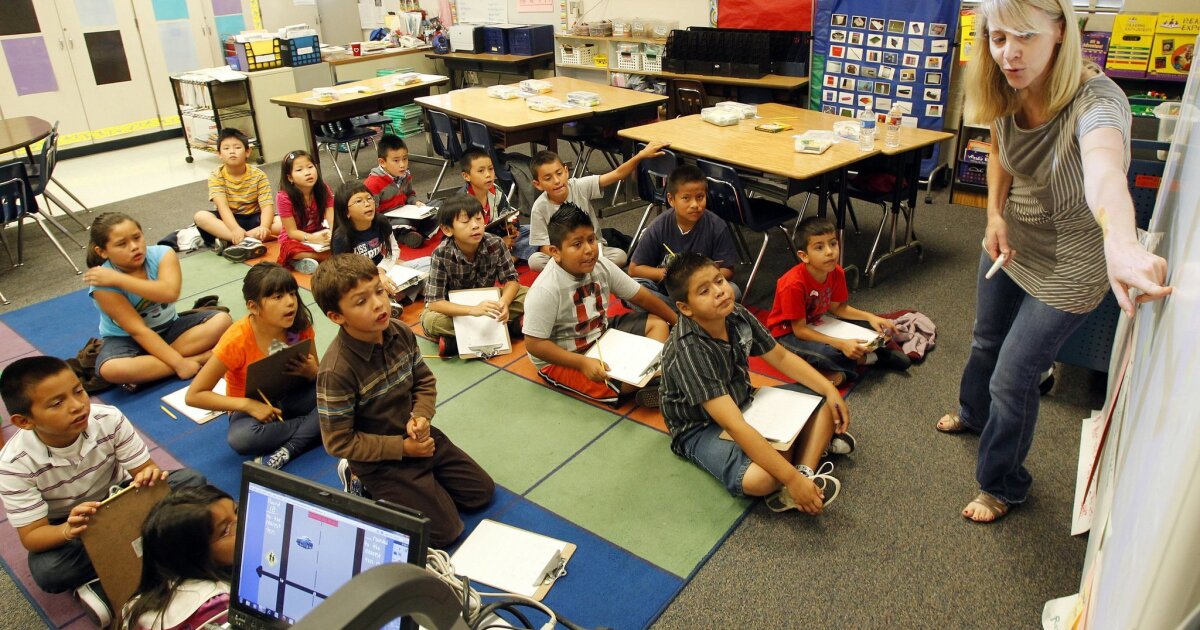
After much anticipation from parents, the San Diego Unified School District will start bringing back small groups of “vulnerable” students for in-person learning support Tuesday, Oct. 13, representing the first phase of the district’s reopening from coronavirus-related campus closures.
Families will hear from teachers starting next week whether their child qualifies for the appointment-based support sessions, said San Diego Unified board Vice President Richard Barrera.
The sessions will be for students in elementary grades who are experiencing learning loss or are special-education students with high needs. As many as 12,000 of the district’s roughly 100,000 students will get to participate.
The group sessions will be limited to six students at a time in each classroom for transitional kindergarten through third grade, and eight students in fourth and fifth grade.
Safety measures will be required as recommended by a panel of UC San Diego experts who wrote a report for the district in August. That means every classroom without good natural ventilation will have a MERV 13 air filter or a portable air cleaner, everyone will wear masks and physical distancing will be enforced, according to Superintendent Cindy Marten. If any students show symptoms of coronavirus infection, schools will connect them to virus testing or have them get tested at the district’s school health centers, Marten said.
Marten said principals are assessing ways to hold outdoor classes, which is considered to be an effective coronavirus prevention strategy for schools.
She added that the district is working with UCSD experts to figure out how to implement asymptomatic coronavirus testing for students and staff.
“We understand how critical testing, tracing and treatment is going to be for future phases,” Marten said.
While San Diego Unified has been planning for the first limited phase of reopening, some parents have urged the district to reopen now for all students, saying students’ mental and academic well-being are hurt during the school closures.
The timing of the next phase of the district’s reopening will depend on the success of this first phase, district officials have said, but Barrera has said he hopes the second phase could start in November.
“Fast or slow is not as important as following the advice and the guidance of the scientists that show us the trajectory of case rates and how certain factors mitigate the spread of the virus,” Marten said.
The district’s state-required learning continuity plan that was approved last week offers a glimpse into how much safety measures and supplies will cost to reopen. As of Sept. 30, the district has spent $45 million to prepare for reopening, Barrera said.
The district has spent or anticipates spending $30.1 million on supplies, including personal protective equipment, cleaning supplies and shields for front offices. The district anticipates spending $9.6 million to implement safety protocols such as daily temperature checks, $5.8 million on social and emotional initiatives for students and $3.5 million for safe student transportation.
For distance learning, the district has spent or anticipates spending $18.3 million on student devices and internet access, $20.6 million on training for online learning and digital learning tools and $3.9 million on technology support, according to the plan. The district says it has distributed roughly 75,000 devices to students so far.
The $45 million in spending was funded by state coronavirus aid allocated to schools to mitigate learning loss, Barrera said. The district can use that money for reopening costs because reopening schools is a key strategy to halt learning loss, he said.
Earlier this year, the district expected to receive $92 million in learning-loss funds from the state. The district received less than that due to what Barrera said was a state calculation error.
The district received an additional $31 million in federal CARES Act funding, but it spent much of that in the spring paying for things such as Chromebooks, staff training, licensing and software, Barrera said.
The coronavirus aid helped the district eliminate what was once expected to be an $84 million shortfall for this school year.
Barrera added that while schools received coronavirus aid and are not getting state funding cuts this school year, the state budget did not include a cost-of-living increase. The coronavirus aid helped the district absorb roughly $40 million to $50 million in already-expected operating cost increases, including increases for health care costs and scheduled pay raises.
The district ended up spending $6.5 million more than it received last school year, according to the district’s unaudited financial report. The district’s total spending was $1.4 billion.
"some" - Google News
October 01, 2020 at 09:32AM
https://ift.tt/3kWOgfq
San Diego Unified School District will bring back some 'vulnerable' students Oct. 13 - pbmonthly.net
"some" - Google News
https://ift.tt/37fuoxP
Shoes Man Tutorial
Pos News Update
Meme Update
Korean Entertainment News
Japan News Update
Bagikan Berita Ini














0 Response to "San Diego Unified School District will bring back some 'vulnerable' students Oct. 13 - pbmonthly.net"
Post a Comment